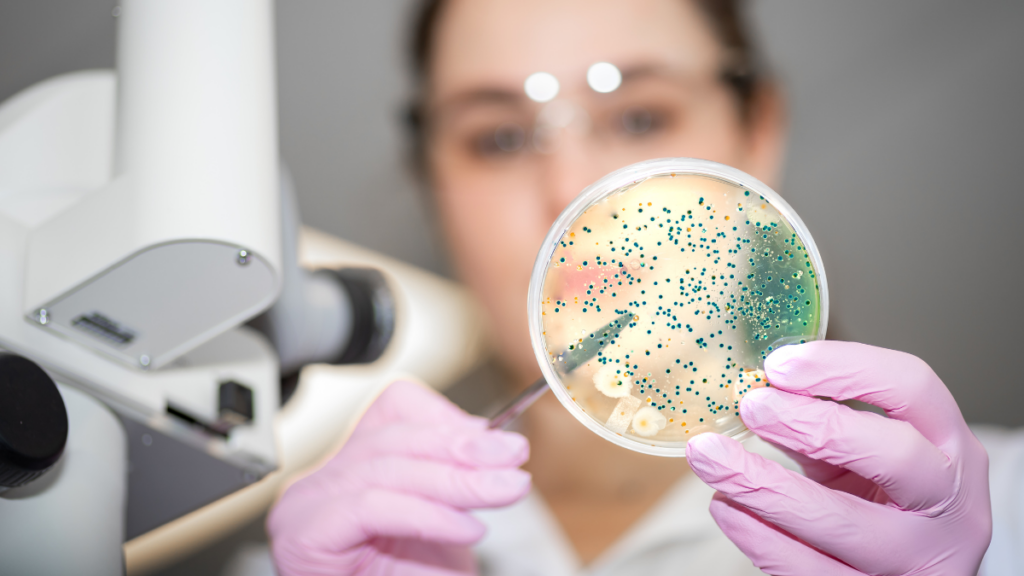Annunci
Svelare il futuro con la biotecnologia: trasformare la salute e la medicina

La biotecnologia sta rimodellando il panorama sanitario così come lo conosciamo. Ogni anno che passa, innovazioni rivoluzionarie stanno facendo scalpore, offrendo potenziali soluzioni ad alcuni dei problemi di salute più complessi.
Vi trovate sull'orlo di una nuova era in cui l'editing genetico, la medicina personalizzata e la biologia sintetica potrebbero trasformare l'assistenza ai pazienti.
Questi progressi potrebbero migliorare significativamente la qualità della vita e prolungarne l'aspettativa, preannunciando un futuro in cui malattie croniche come diabete, cancro e Alzheimer saranno gestite in modo più efficace o forse addirittura curate.
Potremmo presto assistere a un'integrazione senza precedenti tra tecnologia e biologia, che renderà più sfumati i confini tra ciò che è naturale e ciò che è ingegnerizzato.
Immagina un mondo in cui è possibile combattere le malattie in modo preventivo attraverso sistemi di diagnosi precoce basati sull'intelligenza artificiale o in cui è possibile accedere a tecniche di medicina rigenerativa che riparano organi e tessuti danneggiati.
Le possibilità sono vaste e variegate e spaziano dalla tecnologia indossabile che monitora la salute in tempo reale ai trattamenti bioingegnerizzati che colpiscono le malattie a livello molecolare.
Con l'evoluzione di queste innovazioni, non solo assisteremo a cambiamenti nell'assistenza sanitaria, ma anche nel modo in cui interagiremo con i professionisti del settore medico.
In futuro potrebbero essere disponibili piani di trattamento personalizzati, adattati al tuo corredo genetico, riducendo al minimo le congetture nella prescrizione dei farmaci e diminuendo il rischio di reazioni avverse.
In questo campo in rapida crescita di innovazioni biotecnologiche, non sei solo un destinatario passivo, ma un partecipante attivo di una rivoluzione sanitaria che promette di offrirti soluzioni su misura, progettate per la tua esclusiva composizione biologica.
Medicina personalizzata e editing genetico
I progressi nella medicina personalizzata e nell'editing genetico stanno aprendo la strada a trattamenti personalizzati in base al tuo patrimonio genetico, rivoluzionando potenzialmente l'assistenza sanitaria così come la conosci.
CRISPR e terapie mirate
La tecnologia CRISPR-Cas9 consente ora di apportare modifiche precise alle sequenze del DNA, il che può portare allo sviluppo di terapie altamente mirate.
Queste terapie possono colpire geni specifici responsabili di patologie come la fibrosi cistica o l'anemia falciforme. Ecco come funzionano:
- Scoperta: Identificazione del gene responsabile di una malattia.
- Progetto: È stato creato un sistema CRISPR-Cas9 personalizzato per individuare e tagliare il DNA nel punto preciso del gene difettoso.
- Consegna:Il sistema viene recapitato nelle vostre cellule.
- Riparazione: Le tue cellule riparano il taglio, correggendo probabilmente la condizione genetica.
Genomica e bioinformatica
I campi della genomica e della bioinformatica sono essenziali per comprendere il profilo genetico e il suo utilizzo in medicina.
Si combinano per analizzare enormi set di dati allo scopo di prevedere, diagnosticare e curare malattie basandosi sulle informazioni genetiche.
- Genomica: Esamina la sequenza completa del DNA e la funzionalità dei geni nel tuo corpo.
- Bioinformatica: Utilizza strumenti computazionali per gestire e analizzare i dati genetici.
Grazie a questi strumenti, i medici possono personalizzare i trattamenti in base alle predisposizioni genetiche, offrendo una medicina più efficace e precisa.
Medicina rigenerativa e ingegneria tissutale
I progressi rivoluzionari nella medicina rigenerativa e nell'ingegneria tissutale stanno aprendo nuove strade per il trattamento di malattie e lesioni.
Scoprirai come le cellule staminali vengono sfruttate per riparare i tessuti danneggiati e come la biostampa sta aprendo la strada alla sostituzione degli organi.
Innovazioni sulle cellule staminali
cellule staminali Sono il pilastro della medicina rigenerativa. Hanno la capacità unica di svilupparsi in diversi tipi di cellule, offrendo un grande potenziale per la riparazione di organi e tessuti. Scoprirete che i ricercatori si stanno ora concentrando su:
- Cellule staminali pluripotenti: possono trasformarsi in qualsiasi tipo di cellula del corpo.
- Cellule staminali adulte: presenti in piccole quantità nella maggior parte dei tessuti, vengono utilizzate per la riparazione e il mantenimento di tali tessuti.
Sono in corso studi clinici per terapie con cellule staminali per curare patologie quali il morbo di Parkinson, lesioni del midollo spinale e malattie cardiache, con risultati promettenti.
Bioprinting e sostituzione di organi
Biostampa 3D è una tecnologia rivoluzionaria che stratifica cellule viventi, chiamate bio-inchiostro, per creare strutture simili ai tessuti. Questa tecnologia è fondamentale per:
- Creazione di modelli di tessuto: Per test sui farmaci e studi sulle malattie.
- Progettazione di impianti personalizzati: Su misura per le esigenze individuali del paziente.
La ricerca sulla sostituzione degli organi è attualmente focalizzata su stampa di organi funzionali, con l'obiettivo di alleviare la carenza di organi dei donatori.
Mentre la stampa di organi interi è ancora in fase di sviluppo, strutture parziali, come valvole cardiache e innesti cutanei, sono già in fase di sperimentazione in ambienti clinici.